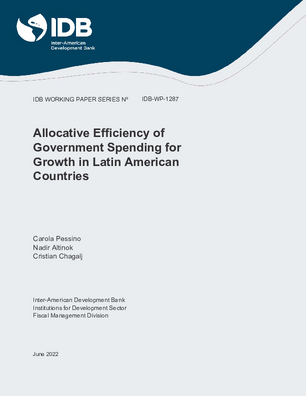Allocative Efficiency of Government Spending for Growth in Latin American Countries
Date
Jun 2022
There is scant empirical economic research regarding the way that Latin American governments efficiently allocate their spending across different functions to achieve higher growth. While most papers restrict their analysis to the size of government, much less is known about the composition of spending and its implications for long-term growth. This paper sheds light on how allocating expenditures to investment in quality human and physical capital, and avoiding waste on inefficient expenditures, enhance growth in Latin America. This paper uses a novel dataset on physical and human capital and detailed public spending that includes -for the first time- Latin American countries, which is categorized by a cross-classification that provides the breakdown of government expenditure, both, by economic and by functional heads. The database covers 42 countries of the OECD and LAC between 1985 and 2017. There are five main results. First, the estimated growth equations show significant positive effects of the factors of production on growth and plausible convergence rates (about 2 percent). The estimated effect of the physical investment rate is positive and significant with a long-run elasticity of 1.2. Second, while the addition of years of education as a proxy for human capital tends to have no effect on growth, the addition of a new variable that measures quality-adjusted years of schooling as a proxy for human capital turns out to have a positive and significant effect across all specifications with a long-run elasticity of 1.1. However, if public spending on education (excluding infrastructure spending) is added to the factor specification, growth is not affected. This is mainly because, once quality is considered, spending more on teacher salaries has no effect on student outcomes. Therefore, the key is to increase quality, not just school performance or education spending. Third, both physical and human capital are equally important for growth: the effect of increasing one standard deviation of physical capital or human capital statistically has the same impact on economic growth. Fourth, increasing public investment spending (holding public spending constant) is positive and significant for growth (a 1% increase in public investment would increase the long-term GDP per capita by about 0.3 percent), in addition to the effect of the private investment rate. However, the effect of public spending on payroll, pensions and subsidies does not contribute to economic growth. Fifth, the overall effect of the size of public spending on economic growth is negative in most specifications. An increase in the size of government by about 1 percentage point would decrease 4.1 percent the long-run GDP per capita, but the more effective the government is, the less harmful the size of government is for long-term growth.




